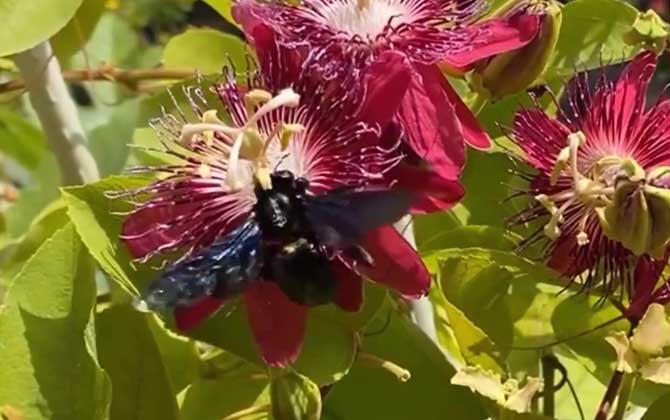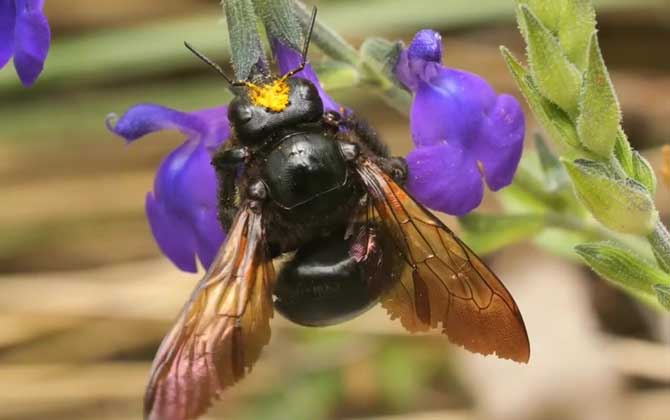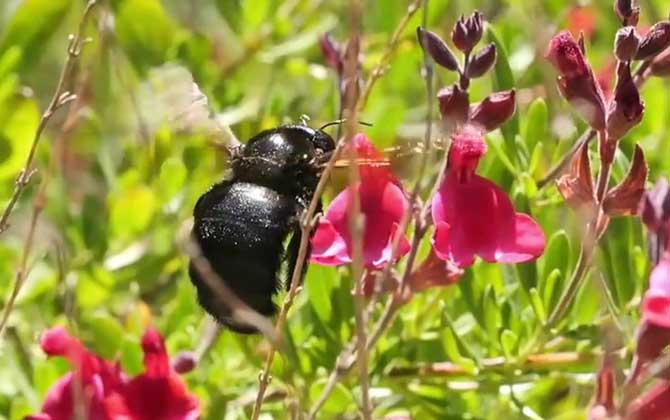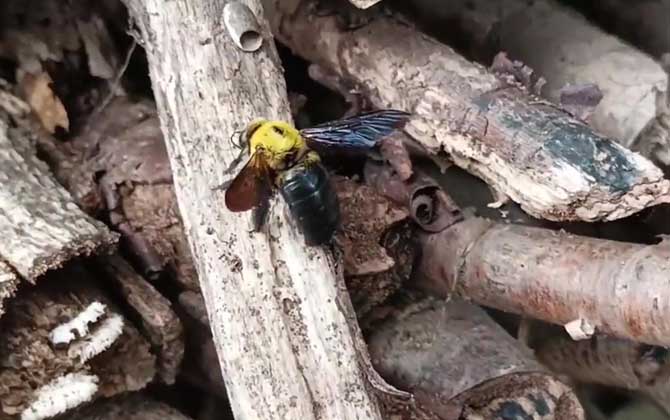Bamboo Bee (Xylocopa spp.) Overview
The Bamboo Bee, scientifically classified under the genus Xylocopa, is a solitary insect belonging to the Apidae family. Commonly known as the Black Carpenter Bee or Bamboo Carpenter Bee, it derives its name from its unique nesting behavior in decaying bamboo and wooden structures. Predominantly found in southern China, this fascinating insect leads a solitary lifestyle and primarily feeds on pollen and nectar. A key question often asked is: Are Bamboo Bees venomous? Let’s explore this species in detail.

1. Species Characteristics
The Bamboo Bee (Xylocopa nasalis) displays distinct biological features:
- Taxonomy: Kingdom Animalia → Phylum Arthropoda → Class Insecta → Order Hymenoptera → Family Apidae → Genus Xylocopa
- Physical Appearance: Shiny metallic blue-black body with translucent wings, measuring 2-3 cm in length
- Habitat Preference: Frequently inhabits decaying bamboo poles, wooden eaves, and dead tree trunks
- Geographic Distribution: Primarily distributed across subtropical regions of China, including Yunnan, Guangxi, and Guangdong provinces

2. Venom Composition and Toxicity
Bamboo Bees possess venom, though their toxicity differs significantly from wasps or hornets. Their venom contains:
| Component | Percentage | Function |
|---|---|---|
| Melittin | 50% | Primary toxic peptide causing cell membrane disruption |
| Apamin | 2-3% | Neurotoxic polypeptide affecting CNS |
| Phospholipase A2 | 10-12% | Enzyme inducing inflammatory response |
| Histamine | 0.5-1% | Causes localized swelling and itching |
Comparative toxicity analysis shows Bamboo Bee venom is 30-40% less potent than common honeybee venom.

3. Sting Symptoms and Reaction Timeline
When stung by a Bamboo Bee, victims typically experience:
- Immediate Reaction (0-10 minutes):
- Sharp burning pain (Intensity score: 4/10)
- Localized erythema (redness)
- Intermediate Phase (10 mins-24 hrs):
- Edema (swelling diameter 2-5 cm)
- Pruritus (itching intensity 5-7/10)
- Recovery Phase (24-72 hrs):
- Gradual reduction of symptoms
- Complete resolution within 5 days in 95% cases

4. First Aid Protocol and Management
Follow this evidence-based approach for Bamboo Bee stings:
Step 1: Immediate Response
- Remove stinger using tweezers (if visible)
- Clean with alkaline solution:
- Baking soda paste (3:1 water:soda ratio)
- Soap water (pH 9-10)
Step 2: Symptom Management
- Apply cold compress (15 mins ON/15 mins OFF)
- Topical treatments:
- 1% hydrocortisone cream for itching
- Calamine lotion for inflammation
- Traditional remedies: Crushed plantain leaves or aloe vera gel
Step 3: Allergy Monitoring
- Watch for systemic reactions:
- Hives beyond sting site
- Difficulty breathing (anaphylaxis)
- Swollen lips/tongue
- Administer antihistamines (e.g., Loratadine 10mg) if needed
- Seek emergency care for severe reactions
Ecological Note: Despite their defensive sting, Bamboo Bees play crucial roles as pollinators for over 120 plant species in their habitats. Their bamboo-nesting behavior contributes to natural decomposition processes in forest ecosystems.